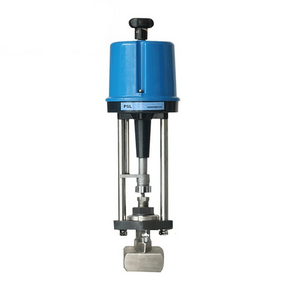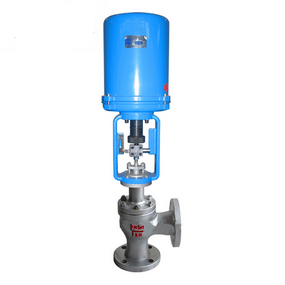It has the action of rotating 90 degrees. The cock body is a sphere with a circular through hole or channel passing through its axis. The ball valve in the pipeline is mainly used to cut off, distribute and change the flow direction of the medium. It can be closed tightly with only 90 degree rotation and a small rotating torque. Ball valve is most suitable for use as switch and shut-off valve, but recent development has designed ball valve to be used for throttling and flow control, such as V-type ball valve. Function: The ball valve is mainly used to cut off, distribute and change the flow direction of medium on the pipeline. The ball valve with V-shaped opening also has good flow regulation function.
1、 Purpose
This product is suitable for chemical, petrochemical, petroleum, paper making, mining, power, liquefied gas, food, pharmacy, water supply and drainage, municipal, mechanical equipment, electronic industry, urban construction and other fields.
2、 Main performance parameters
1; Connection type: thread, flange, welding
2; Transmission mode: manual, worm gear, gear, pneumatic, electric, etc
3; Diameter from DN15-DN600; Pressure ranges from 1.0MPA-42MPA; Temperature - 100 ℃ - 600 ℃
4; Materials: forged steel, stainless steel 304, stainless steel 316, stainless steel 316L
5; The three-way or four-way ball valve can not only flexibly control the confluence, diversion and flow direction switching of media on the pipeline, but also close any channel to connect the other two channels.
3、 Structural characteristics
1. Locking holes can be set at the fully open and fully closed positions of the valve according to the user's requirements to prevent misoperation by non staff.
2. A step is set at the lower part of the valve stem to prevent the internal pressure of the valve from rising abnormally out of the valve stem.
3. The switch is fast, the opening and closing are flexible, the service life is long, and the safety is reliable.
4. Pneumatic and electric ball valves can be remotely and centrally controlled, and can meet the needs of computer program control.
5. Good fireproof and anti-static performance.
4、 Advantages
1. The fluid resistance is small, and the full bore ball valve basically has no flow resistance.
2. Simple structure, small volume and light weight.
3. Tight and reliable. It has two sealing surfaces. At present, various plastics are widely used as the sealing surface materials of the ball valve, with good sealing performance and complete sealing. It has also been widely used in vacuum systems.
4. Convenient operation, fast opening and closing, 90 ° rotation from full opening to full closing, convenient for remote control.
5. It is easy to maintain, the ball valve structure is simple, the sealing ring is generally movable, and it is easy to remove and replace.
6. When the valve is fully opened or closed, the sealing surfaces of the ball and valve seat are isolated from the medium. When the medium passes through, it will not cause erosion of the sealing surface of the ball valve.
7. It has a wide range of applications, ranging from a few millimeters to several meters in diameter, from high vacuum to high pressure.
8. The ball valve can be used in media with suspended solid particles due to its wiping property during opening and closing.
5、 Precautions for installation of ball valve:
When the ball valve is closed, there is still pressurized fluid inside the valve body
Before maintenance, relieve the pipeline pressure and keep the ball valve in the open position
Disconnect the power or air source before maintenance
Detach the actuator from the bracket before maintenance
It must be verified that the upstream and downstream pipelines of the ball valve have been relieved of pressure before disassembly
During disassembly and reassembly, be careful not to damage the sealing surface of parts, especially non-metallic parts. Special tools should be used when taking out the O-ring
During assembly, the bolts on the flange must be tightened symmetrically, step by step and evenly
The cleaning agent shall be compatible with rubber parts, plastic parts, metal parts and working media (such as gas) in the ball valve. When the working medium is gas, the metal parts can be cleaned with gasoline (GB484-89). Clean non-metallic parts with pure water or alcohol
The disassembled individual parts can be cleaned by immersion. The metal parts that have not been decomposed can be scrubbed with clean, fine and clean silk cloth impregnated with cleaning agent (to avoid fiber falling off and adhering to the parts). All grease, dirt, glue and dust adhered to the wall surface must be removed during cleaning
The non-metallic parts shall be taken out of the cleaning agent immediately after cleaning, and shall not be soaked for a long time
After cleaning, it is necessary to assemble after the cleaning agent for the washed wall surface volatilizes (it can be wiped with a silk cloth that is not soaked in the cleaning agent), but it is not allowed to leave it for a long time, otherwise it will rust and be polluted by dust. New parts should also be cleaned before assembly
Lubricate with grease. The lubricating grease shall be compatible with the metal materials, rubber parts, plastic parts and working media of the ball valve. When the working medium is gas, for example, special 221 grease can be used. Apply a thin layer of grease on the surface of the seal mounting groove, a thin layer of grease on the rubber seal, and a thin layer of grease on the sealing surface and friction surface of the valve stem
During assembly, it is not allowed to have metal chips, fibers, grease (except those specified for use), dust and other impurities, foreign matters, etc. contaminating, adhering to or staying on the surface of parts or entering the cavity



